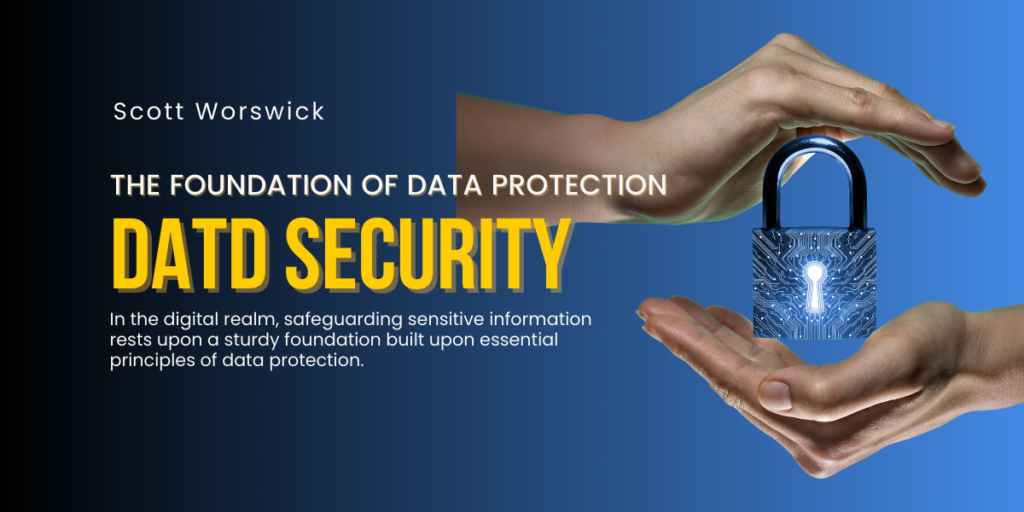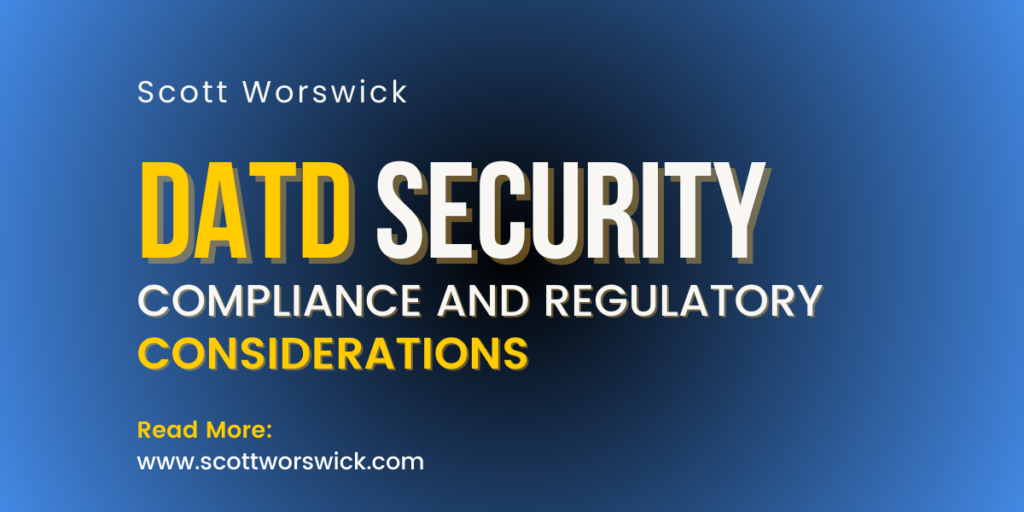In today’s interconnected world, where information flows freely across vast digital networks, the safeguarding of sensitive data has emerged as a paramount concern. From personal identities to corporate trade secrets, the stakes are higher than ever in ensuring the integrity and confidentiality of our digital footprints. As we navigate the complexities of the digital age, understanding the fundamentals of data security becomes not just a matter of prudence, but a critical imperative for individuals and organizations alike. This introduction sets the stage for delving deeper into why mastering the essentials of data security is indispensable in safeguarding our digital assets and navigating the evolving landscape of cyber threats.
At its core, data security encompasses a multifaceted array of measures designed to protect information from unauthorized access, use, or alteration. From encryption protocols to access controls and intrusion detection systems, the arsenal of tools and techniques at our disposal continues to evolve in tandem with the sophistication of cyber threats. In this dynamic environment, staying abreast of the latest developments and best practices in data security is essential for mitigating risks and maintaining the trust of stakeholders. By understanding the underlying principles and methodologies of data security, individuals and organizations can fortify their defenses and respond effectively to emerging threats.
Moreover, the importance of data security extends beyond mere technical considerations to encompass broader ethical and societal implications. In an era where data breaches and cyberattacks have become increasingly commonplace, the consequences of inadequate security measures can be far-reaching and profound. From financial losses and reputational damage to legal liabilities and breaches of privacy, the fallout from a security breach can reverberate across entire industries and communities. By prioritizing data security and embracing a culture of vigilance and responsibility, we not only protect our own interests but also contribute to the collective endeavor of creating a safer and more secure digital ecosystem for all.
Table of Contents
1. Introduction to Data Security in the Digital Age
In an era characterized by ubiquitous connectivity and unprecedented technological advancements, the importance of data security has risen to the forefront of societal consciousness. As individuals and organizations alike increasingly rely on digital platforms to store, transmit, and process information, the need to safeguard sensitive data has become paramount. The digital age has ushered in a new paradigm where data has emerged as one of the most valuable assets, driving innovation, powering economies, and transforming the way we interact with the world around us.
In this digital landscape, the concept of data security encompasses a multifaceted array of measures aimed at protecting information from unauthorized access, use, or disclosure. From personal identities to proprietary business secrets, the stakes are higher than ever in ensuring the integrity and confidentiality of our digital footprints. Data security is not merely a technical concern but a fundamental necessity for preserving trust, maintaining privacy, and upholding ethical standards in the digital realm. It serves as the bedrock upon which our digital interactions and transactions are built, providing the assurance that sensitive information will be handled with utmost care and diligence.
The proliferation of cyber threats in the digital age underscores the urgency of prioritizing data security as a central tenet of our digital infrastructure. Malicious actors, armed with sophisticated tools and tactics, continuously seek to exploit vulnerabilities in networks and systems for financial gain, espionage, or sabotage. From phishing scams and malware attacks to data breaches and ransomware incidents, the consequences of inadequate data security measures can be far-reaching and profound, affecting individuals, businesses, and entire communities. By understanding the evolving nature of these threats and implementing robust security protocols, individuals and organizations can fortify their defenses and mitigate the risks posed by cyber adversaries.
As we navigate the complexities of the digital age, understanding the basics of data security is not just a matter of compliance or risk management but a collective imperative for safeguarding our digital future. It requires a proactive approach, informed decision-making, and a commitment to ongoing education and awareness. By fostering a culture of data security consciousness, we can empower individuals and organizations to navigate the digital landscape with confidence, resilience, and integrity, ensuring that our data remains safe, secure, and accessible for generations to come.
2. The Foundation of Data Protection

In the digital realm, safeguarding sensitive information rests upon a sturdy foundation built upon essential principles of data protection. Encryption stands as a formidable fortress, ensuring that data remains indecipherable to unauthorized eyes even if intercepted during transmission. This cryptographic technique transforms plaintext into ciphertext, rendering it unintelligible to anyone without the corresponding decryption key. By integrating encryption into their data security strategy, individuals and organizations can bolster the confidentiality of their information, thwarting potential breaches and preserving the integrity of their digital assets.
Access controls serve as the gatekeepers of data security, regulating who can view, modify, or delete information within a system or network. Through the implementation of user authentication mechanisms such as passwords, biometrics, or multi-factor authentication, access controls enforce the principle of least privilege, granting users only the permissions necessary to perform their designated tasks. Additionally, role-based access control (RBAC) assigns privileges based on predefined roles, streamlining administration and minimizing the risk of unauthorized access. By establishing granular access controls, organizations can mitigate the risk of insider threats and unauthorized external access, fortifying their defenses against potential breaches and data exfiltration.
Regular audits constitute a vital component of the data security framework, providing insight into the effectiveness of existing safeguards and identifying areas for improvement. Through systematic examination and analysis of access logs, security configurations, and compliance adherence, audits offer valuable feedback on the overall health of an organization’s data security posture. By conducting periodic assessments and remediation efforts, organizations can proactively identify and address vulnerabilities before they are exploited by malicious actors, enhancing resilience and minimizing the impact of potential security incidents.
3. The Role of Access Controls in Data Security
Access controls serve as the custodians of data security, orchestrating the intricate dance between accessibility and protection within digital ecosystems. These controls dictate who can access, modify, or delete data within a system or network, thereby safeguarding sensitive information from unauthorized or malicious activities. By implementing access controls, organizations establish a layered defense mechanism that reinforces the confidentiality, integrity, and availability of their data assets, ensuring that only authorized individuals can interact with sensitive information.
User authentication lies at the heart of access controls, requiring individuals to verify their identity before gaining access to data or resources. This process validates the authenticity of users through various authentication factors such as passwords, biometrics, or security tokens. By confirming the identity of users, organizations can mitigate the risk of unauthorized access and deter potential intruders from compromising data security. Additionally, multi-factor authentication (MFA) enhances the robustness of authentication mechanisms by requiring users to provide multiple forms of verification, further fortifying the protective barrier around sensitive information.
Role-based access control (RBAC) offers a structured approach to access management, assigning permissions based on predefined roles and responsibilities within an organization. By categorizing users into distinct roles and granting them permissions commensurate with their job functions, RBAC streamlines access management processes and reduces the risk of privilege escalation. This granular control over data access ensures that individuals only have access to the information necessary to fulfill their duties, minimizing the potential for unauthorized data exposure or misuse. Through RBAC, organizations can achieve a fine balance between usability and security, optimizing data protection without impeding operational efficiency.
Privileged access management (PAM) addresses the unique challenges associated with managing elevated access rights, such as those held by administrators, executives, or IT personnel. PAM solutions help organizations monitor, control, and audit privileged access to critical systems and data, mitigating the risk of insider threats and credential misuse. By implementing robust PAM practices, organizations can enforce the principle of least privilege, limit the scope of privileged access, and ensure accountability and traceability in privileged activities. This proactive approach to access management bolsters the overall resilience of data security frameworks, enabling organizations to safeguard their most sensitive information from internal and external threats alike.
4. Vigilance Against Emerging Cyber Threats
In the dynamic landscape of the digital age, maintaining vigilance against emerging cyber threats is paramount to the integrity and resilience of data security measures. Malicious actors continually evolve their tactics, exploiting vulnerabilities in networks, systems, and human behavior to gain unauthorized access to sensitive information. From sophisticated phishing schemes to stealthy ransomware attacks, the breadth and complexity of cyber threats pose a formidable challenge to organizations of all sizes and industries. By staying abreast of emerging trends and evolving threat landscapes, individuals and organizations can proactively adapt their data security strategies to mitigate risks and protect against potential breaches.
One of the key strategies in combating emerging cyber threats is the implementation of proactive threat detection and response mechanisms. By leveraging advanced analytics, machine learning algorithms, and threat intelligence feeds, organizations can detect anomalies and suspicious activities indicative of potential security breaches. Real-time monitoring of network traffic, system logs, and user behavior enables rapid identification and containment of security incidents, minimizing the impact and spread of malicious activities. Through continuous monitoring and analysis, organizations can bolster their defenses and thwart emerging threats before they escalate into full-fledged data security breaches.
Moreover, fostering a culture of cybersecurity awareness and education is essential in equipping individuals with the knowledge and skills necessary to identify and mitigate emerging cyber threats. Training programs, simulated phishing exercises, and cybersecurity awareness campaigns can help raise awareness among employees about common cyber risks and best practices for data security. By empowering individuals to recognize phishing attempts, practice good password hygiene, and report suspicious activities, organizations can create a human firewall that complements technical controls in safeguarding sensitive data. Through a collaborative effort that combines technological innovation with human vigilance, organizations can enhance their resilience against emerging cyber threats and uphold the integrity of data security in the digital age.
5. Compliance and Regulatory Considerations

In the ever-evolving landscape of data security, compliance with regulatory standards and frameworks stands as a crucial pillar in ensuring the protection of sensitive information. Governments and industries worldwide have enacted stringent laws and regulations, such as GDPR, HIPAA, and PCI DSS, to safeguard individuals’ privacy and uphold the integrity of data security practices. Adherence to these regulations not only demonstrates an organization’s commitment to ethical conduct but also mitigates legal liabilities associated with data breaches. By aligning with regulatory mandates, organizations can foster trust among stakeholders and uphold the highest standards of data security and privacy protection.
Furthermore, compliance with regulatory requirements serves as a roadmap for implementing robust data security measures and best practices. These regulations often outline specific guidelines and controls for safeguarding sensitive data, including encryption, access controls, data retention policies, and incident response procedures. By incorporating these prescribed measures into their data security frameworks, organizations can enhance their resilience against potential threats and vulnerabilities. Moreover, compliance-driven initiatives encourage continuous improvement and innovation in data security practices, ensuring that organizations remain agile and adaptive in the face of evolving cyber threats.
Beyond legal obligations, compliance with data security regulations also fosters a culture of accountability and transparency within organizations. By establishing clear guidelines and standards for data protection, regulatory frameworks empower stakeholders to take ownership of their responsibilities in safeguarding sensitive information. Compliance-driven initiatives often involve regular audits, assessments, and reporting requirements, providing organizations with valuable insights into their data security posture and areas for improvement. Through a proactive approach to compliance, organizations can instill confidence among customers, partners, and regulators, demonstrating their commitment to ethical conduct and responsible data stewardship.
Ultimately, compliance with data security regulations is not just a box to be checked but a strategic imperative for organizations operating in the digital age. By embracing regulatory requirements as a catalyst for continuous improvement and innovation, organizations can strengthen their defenses against emerging cyber threats and safeguard the trust and confidence of their stakeholders. Compliance-driven initiatives not only mitigate legal and financial risks associated with data breaches but also uphold the principles of integrity, confidentiality, and accountability that underpin effective data security practices in today’s interconnected world.
6. The Importance of Data Security in Business Operations
Data security is not merely a peripheral concern for businesses; it is a foundational element that underpins every facet of operations in the digital age. From safeguarding customer information to protecting proprietary data and trade secrets, data security is essential for maintaining trust, credibility, and competitiveness in today’s interconnected world. In an era where data breaches and cyberattacks are on the rise, the importance of robust data security measures cannot be overstated. A single breach can have far-reaching consequences, including financial losses, reputational damage, and legal liabilities, which can jeopardize the viability and sustainability of a business.
Moreover, data security is integral to fostering a culture of trust and confidence among customers, partners, and stakeholders. In an increasingly data-driven economy, individuals entrust businesses with their sensitive information under the implicit agreement that it will be handled with utmost care and diligence. Any breach of this trust can irreparably damage brand reputation and erode customer loyalty. By prioritizing data security, businesses demonstrate their commitment to ethical conduct and responsible data stewardship, fostering long-term relationships built on transparency, integrity, and reliability.
Furthermore, data security is not just a defensive measure but also a catalyst for innovation and growth. By investing in robust data security infrastructure and practices, businesses can unlock new opportunities for leveraging data to drive strategic decision-making, improve operational efficiency, and enhance customer experiences. Secure data management practices enable businesses to harness the full potential of their data assets while mitigating the risks associated with unauthorized access, data breaches, and regulatory non-compliance. In today’s competitive landscape, data security serves as a differentiator that sets apart forward-thinking organizations committed to protecting the interests of their customers and stakeholders.
Ultimately, the importance of data security in business operations extends beyond mere compliance or risk management; it is a strategic imperative that directly impacts the bottom line and long-term viability of a business. By prioritizing data security as a core component of their operational strategy, businesses can mitigate risks, build trust, drive innovation, and position themselves for sustainable growth and success in the digital age. As the volume and complexity of data continue to grow, organizations must remain vigilant and proactive in adapting their data security practices to address emerging threats and challenges, ensuring that their data remains safe, secure, and accessible for generations to come.
7. Embracing a Culture of Data Security Awareness
In the digital age, data security awareness is not just a matter of compliance; it is a cultural imperative that permeates every aspect of organizational operations. A robust culture of data security awareness instills a sense of responsibility and vigilance among employees, empowering them to become active participants in safeguarding sensitive information. By fostering a shared understanding of the importance of data security and the potential risks associated with data breaches, organizations can create a unified front against cyber threats and vulnerabilities.
Training programs and awareness initiatives play a pivotal role in cultivating a culture of data security awareness within organizations. These programs provide employees with the knowledge and skills necessary to recognize and mitigate common cyber risks, such as phishing scams, malware attacks, and social engineering tactics. Through interactive workshops, simulations, and real-world case studies, employees learn how to identify potential threats, practice good cybersecurity hygiene, and respond effectively to security incidents. By investing in employee education and training, organizations can build a workforce that is equipped to defend against emerging cyber threats and uphold the principles of data security in their day-to-day activities.
Moreover, leadership commitment and organizational support are essential drivers in fostering a culture of data security awareness. When senior executives prioritize data security as a strategic priority and lead by example, it sends a powerful message throughout the organization about the importance of protecting sensitive information. By allocating resources, setting clear expectations, and integrating data security into the fabric of organizational culture, leaders can create an environment where data security becomes ingrained in every decision, action, and interaction. This top-down approach not only reinforces the significance of data security but also fosters accountability and responsibility at all levels of the organization.
Collaboration and communication are key components of a thriving data security culture. By promoting open dialogue and encouraging employees to share insights, concerns, and best practices related to data security, organizations can harness the collective wisdom and expertise of their workforce. Cross-functional collaboration between IT, security, compliance, and other departments facilitates the development of comprehensive data security strategies that address the diverse needs and challenges of the organization. Through ongoing communication and collaboration, organizations can build a resilient data security culture that adapts to evolving threats and challenges, ensuring that data remains safe, secure, and protected in the digital age.
Conclusion
In conclusion, the significance of understanding the basics of data security in the digital age cannot be overstated. As we navigate the complexities of the interconnected world, data security emerges as a fundamental necessity for individuals, businesses, and society as a whole. By mastering foundational principles such as encryption, access controls, and threat detection, we can fortify our defenses against emerging cyber threats and safeguard sensitive information from unauthorized access or disclosure. Moreover, compliance with regulatory standards and frameworks ensures that data security remains a top priority, fostering trust, accountability, and transparency in our digital interactions.
Furthermore, the importance of data security extends beyond mere technical considerations to encompass broader ethical and societal implications. In an era where data breaches and cyberattacks are increasingly commonplace, the consequences of inadequate data security measures can be far-reaching and profound. By embracing a culture of data security awareness and education, we empower individuals to become proactive guardians of their digital footprint, contributing to a safer, more secure digital ecosystem for all. Through collaboration, communication, and leadership commitment, we can foster a culture of data security consciousness that permeates every aspect of organizational operations and decision-making.
As we look to the future, it is imperative that we remain vigilant and proactive in addressing the evolving challenges and threats posed by cyber adversaries. By staying abreast of emerging trends, technologies, and best practices in data security, we can adapt our strategies and defenses to mitigate risks and protect against potential breaches. Ultimately, by understanding the basics of data security and embracing a proactive stance, we can navigate the digital age with confidence, resilience, and integrity, ensuring that our data remains safe, secure, and protected for generations to come.





Pingback: Data Security Best Practices for Small Businesses: Essential Steps to Protect Your Information -